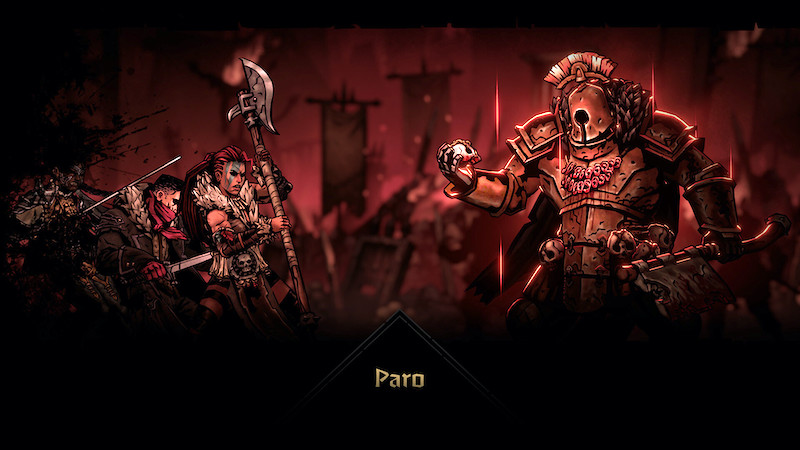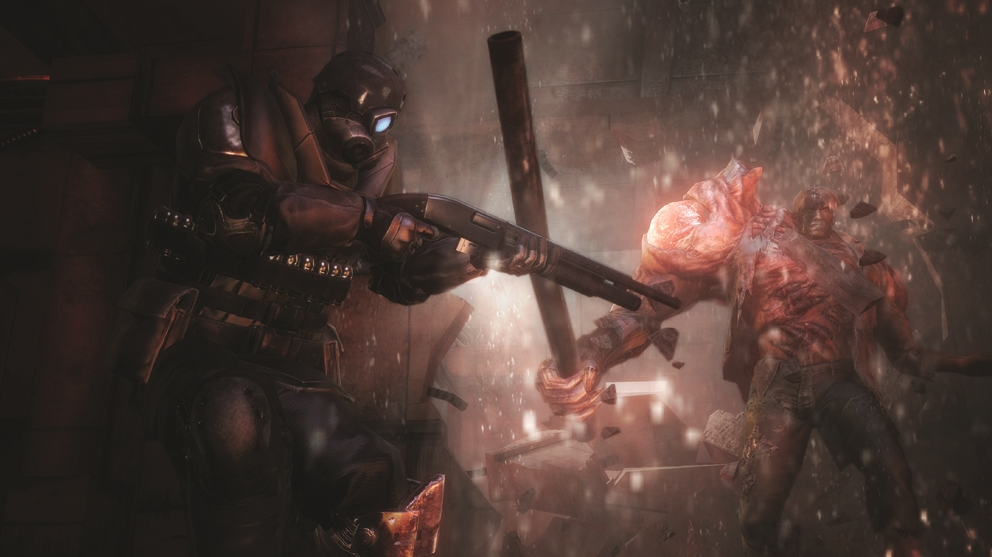
The Story of Alone in the Dark, Historically, and Lore-ically
It’s really easy to point at Alone in the Dark and say “yeah, that’s the progenitor for Resident Evil, I mean, look at it” and get your point across, but to do so would be reductive to the work that was put into crafting the macabre world that Edward Carnby and his ancestors inhabit. To stop your barrage of compliments at “the inspiration for Resident Evil” would be to deny yourself the tale of how one man, with his love of computers and horror movies, built the foundations for one of the most polarizing series in the halls of survival horror greatness.
That man was Frederick Raynal, and working in his father’s computer repair/video rental store in his early twenties had given him the perfect launching point for a notable career in game development. But even before then he had dabbled in game design in high school, creating working projects for the ZX81. While working in his father’s shop he had developed a title in 1989 called Popcorn, a Breakout clone that piqued the interest of the newly formed Infogrames. By the end of the decade, the studio had Frederick working on various ports of Amiga or Atari games, including Alpha Waves, a title considered to be the first 3D platformer. But it wouldn’t be until 1991 when Frederick got his chance to show the world his vision.


When Frederick had first begun brainstorming the title that would become Alone in the Dark, his initial ideas were simple. Firstly, he wanted to make articulated and skinned models for zombies and other creatures, and secondly, he wanted to make an adventure game with a simple goal: get out alive. From the jump, he knew his work was cut out for him. Aiming to surpass the technical limitations of the times to create his vision, Frederick would have to think outside of the polygonal box to achieve his goals.
Working from the ground up to create tools that were simply not available at the time, Frederick created his own program for editing and animating 3D models using flat-shaded polygons to create shapes. On top of this, he also used a tool typically meant for creating 3D spaces to create the fixed camera perspective so popular in the genre. To do this, he would take multiple photos of the locations before scanning the printed photos into the program and drawing the wireframe over them. This process also helped to greatly reduce the number of polygons in any given room, which was a great concern for the limited hardware of the early 90s.


Alone in the Dark
All of this technical work, combined with his love of horror films and role playing games led to the creation of Alone in the Dark. And while I had a hard time digging up any of the original reviews from when the game launched, the general public applauded the game for its graphics and atmosphere, with some publications even listing it as their game of the year. Even before playing the game itself, the packaging that it came in offered a small glimpse and first step into the terrifying tale told within. The retail box of Alone in the Dark came with some extra items, including an in-world newspaper, teasing the events of the game, and a small bound book of tips and tricks.
The tale told in Alone in the Dark is greatly inspired by the works of H.P. Lovecraft. It follows the supposed suicide of a well-known artist, and tasks the player with filling the shoes of either private investigator Edward Carnby, or niece of the deceased Emily Hartwood as they enter the evil residence in search of a piano. While Edward is simply doing what he was paid to, Emily believes that the piano may hold the truth behind her uncle’s suicide. Regardless of their motivation, finding the piano is the easiest part of the journey, as they quickly find themselves without a means to leave, and are forced to travel through the estate to learn the dark truths of the Hartwood home and to get out alive.


The adventure will see the protagonist battle a variety of specters and ghouls, all the while managing their inventory and solving puzzles. The gameplay will immediately be recognizable to fans of the genre, as it features the same tank controls featured in later genre staples. The game also features plenty of notes, elaborating on the lore of the world and cluing the player into much-needed information. While the inventory controls may seem outdated, they were a well-realized transition from the inventory systems of typical adventure games of the time.
As someone who dusts this title off once a year or so for a quick playthrough, I can say that the only thing that truly encumbers the experience is the need to double-tap the walk key to run. Other than that I believe the title has aged like a fine wine and is truly a must-have in any horror fan’s collection. If it can’t be enjoyed for its gameplay then I think the title should be enjoyed as a marker, showing how far not only the survival horror genre, but technology has advanced in the time following its release. And while Frederick was unfortunately not associated with the later titles in the series, his work on the first Alone in the Dark has cemented him as a legend in the industry and a true father of the survival horror genre.


Alone in the Dark 2
Alone in the Dark 2 was first teased in 1993 in a Christmas-themed spinoff of the first game titled Jack in the Dark. The short title put players in the shoes of Grace Saunders, the child whom the player is tasked with rescuing in the second game, as she attempts to escape a toy shop filled with a troupe of terrifying toys. Upon completing the short game, the player was treated to miscellaneous screenshots of the second game. Alone in the Dark 2 released in September of 1994 to mixed reviews, while it had sharpened some aspects of the gameplay, the focus on combat over caution was a departure from the first title and left a sour taste for some who had wished for more Lovecraftian horror.
The plot follows Edward Carnby once again, as he works with a fellow P.I. to locate a missing girl, Grace Saunders. When Edward learns that not only is Grace being held in the home of famed gangster One-Eyed Jack, but that his compatriot had been murdered, he makes it his mission to infiltrate another menacing mansion to get to the bottom of it all. As he makes his way through the home and once again finds himself in an underground cave, he learns that One-Eyed Jack and his crew are actually, and what are the odds of it happening twice, a crew of ghost pirates that need to be stopped. But thankfully Edward is able to put a stop to their child sacrifice and destroy the pirate ship, trapping the remnants inside the cave forever. And afterward, Edward Carnby went on a nice vacation and…


Alone in the Dark 3
Of course, he didn’t, no rest for the wicked, as they say, and there ain’t nothing more wicked than a low-down cowboy who is out for blood. Such are the foes Edward was tasked to face in the third and final installment of the original trilogy. Unfortunately, while Alone in the Dark 3 did once again raise the quality of life in almost every way, it did not change the fact that when it was released in March of 1995, less than a year after the second game, the public had begun to grow tired of the gameplay loop that had remained largely unchanged over 3 years and as many entries into the series. The change in location from a spooky house to a spooky western town was not enough on its own to change the fact that 3D gaming had moved on, and what was once a technical powerhouse was beginning to show its age as others continued to push the hardware of the time.
The story this time around sees Edward Carnby once again on the payroll of the Saunders family, this time to visit a ghost town named Slaughter Gulch to find a missing film crew, amongst whom is Emily Hartwood from the original title. His journey once again finds him combatting a litany of loathsome creatures and solving a plethora of puzzles as he makes his way through the town and into the underground caverns in an attempt to once again stop a spectral force from returning to the world of the living. Unfortunately, along with the gameplay, the storytelling had also grown stale for the series, and while the 3rd title did a lot to improve the cinematic aspects of the title, it did not change the fact that for the third game in a row you were ending the game with an escape from a collapsing structure. And while Resident Evil, released the following year, may have also ended their game the same way, the story and gameplay up that point were far beyond what Infogrames was bringing to the table at this point. Thankfully, after his third adventure, Edward Carnby was finally able to retire and make way for a new generation of supernatural private eyes.


Alone in the Dark: The New Nightmare
The world would not see another title in the Alone in the Dark series until 2001’s Alone in the Dark: The New Nightmare. Riding the coat tails of Resident Evil’s success at the end of the 90s, Infogrames was rejuvenated and ready to reintroduce their beloved horror franchise to the masses. The game was a soft reboot for the series, with the story following the son of Edward Carnby, and for the first time since the original title, players were presented with choosing one of two protagonists, each with their own separate playstyle and campaign. Players who chose Edward Carnby would find themselves using firepower to make their way through the game while those who chose Aline Cedrac would find a campaign that focused on puzzle-solving as opposed to combat. Upon launch, the title garnered favorable reviews, but the common consensus was that the series was not bringing anything new to the genre during a time when other series were releasing their best entries.
The plot for the soft reboot finds the younger Carnby investigating the death of a friend and colleague, just as his father had years before. The plot for this game kicks in much sooner than other titles, though, as the player is made aware of the spiritual nature of the conflict within moments of starting the game. The adventure sees the two players make their way through the haunting mansion and once again into an underground cave as they race to collect the ancient magical tablets and stop them from being used to summon the forces of evil. Again ending their journey in typical Alone in the Dark style by riding a helicopter away as the entire island crumbles into the ocean. This game had seemed like it was going to set up a new series of Alone in the Dark titles featuring the junior Carnby, but alas, he was not meant to return, instead, when the next title in the series would be released we would once again be introduced to a new iteration of Edward Carnby.


Alone in the Dark (2008)
The launch of Alone in the Dark in 2008 has got to be one of the greatest disappointments of my life as a video game enthusiast. The title was shown in small tech demos for quite some time before it launched, and I, among many others, truly thought it was going to be the next step for the genre. Watching developers talk about all of the work being put into the game to introduce a new series of mechanics and physics to play with had me salivating at the chance to play the game. But unfortunately, when it was released, the high points of interacting with the environment were dragged down by the unlikable characters, convoluted plot, and clunky, repetitive gameplay. Reviews of the time reflect as much, with the title receiving middling reviews across the board. While the PS3 re-release titled Alone in the Dark: Inferno did take steps to correct some of the shortcomings of the 360 release, it was not enough to change the public perception of the title.
The story for the title revolves around an amnesiac Edward Carnby, who may in fact be a time-hopping version of the protagonist of the first game, as he attempts to stop Lucifer from using the magic stone he was previously trapped in to destroy the world. The team makes their way across New York City learning more about the stone and Lucifer’s plans before ultimately finding themselves in, YOU GUESSED IT! an underground cave system. While the game thankfully does not end with a collapsing structure as the pair escapes into the sunset, it does feature a pull-the-rug-out-from-under-you downer cliffhanger ending that was shockingly never followed up on in any future titles.


Alone in the Dark: Illumination
Now there is a certain irony to a game being subtitled Illumination but instead driving the series further into the darkness. Alone in the Dark: Illumination was released in 2015 to absolutely no one’s applause. The title was chided for its stark departure from past games in the series, instead aiming to be an uninspired Left 4 Dead knock-off as opposed to survival horror. Aside from its lackluster premise, the game was universally panned for its shallow characters and plot, as well as its repetitive gameplay.
The plot is as thin as paper and centers around a desolate town in Virginia that was evacuated following a devastating flood. Years later and no one will return to the town, as some believe that a mysterious entity known as the darkness has control over the town, and may have been the cause of the flood. The game sees the return of not only the Carnby bloodline, but also the descendants of Emily Hartwood and Grace Saunders. I would genuinely love to tell you more of the plot for this title, but it is the single Alone in the Dark game I could never bring myself to play. Frankly, I am sure if you make up an ending it will probably be better than whatever actually happens in the game.


The future of Alone in the Dark
If I had written this article a year ago I would have ended this with a dour note about the uncertain future of such a revered series, but thankfully as of August 2022 a full remake of the original title has been announced for release sometime in the future. This is going to be a fantastic way for fans of the original to re-experience the horrors within the Derceto mansion, or for new players to experience Carnby’s quest for the first time.
And as I said before, the original games are still a treat to play today, I do still take the time to go back to these old titles. They are all available for purchase on digital storefronts, and with a little patience, there is a lot of fun to be had when diving into the original trilogy, or The New Nightmare. Unfortunately the same can not be said for the later entries, but thankfully the sour taste of those titles is surely to be washed away when the remake launches, according to Steam page, sometime soon.


If you want to be the first to know when the title releases, the easiest way is to pre-order or wishlist on your preferred gaming machine. And if the wait is killing you then I strongly recommend grabbing the entire collection on Steam to get yourself ready for the launch.
And as always, if you are fiending for the latest and greatest in ghoulish, gory gaming, then head back to DreadXP and read more of our frightful features!




